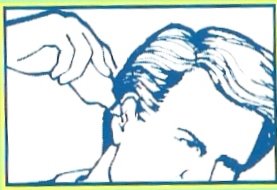Joel Achenbach's column in Sunday's Washington Post about how his blog has essentially taken over his psyche is a rollicking bit of good-humored reading, and is also keenly insightful as to how the 19 Minutes staff is feeling these days. In a good way.
Though occasionally, we feel a little guilty of betraying the legacy of Edward R. Murrow, as the New York Times accused "60 Minutes" in the wake of its decision to edit a story about Big Tobacco. We feel a little bad that we aren't ferreting out corruption on a daily basis, or exposing the racism, or sexism, or xenophobia that pervades our every day life, and guilty that even many of our listeners in Public Radioland are most impressed, when they stop by the radio station, not by the slew of awards in the foyer, but by the picture of Terry Gross in the lobby.
Then, we turn on the Food Network. And we realize that, whatever shortcomings our wing of the media might have when it comes to investigative reporting, at least we're not filling time with a behind-the-scenes exposé about half-pint milk containers -- and how they're filled. Somehow, the Food Network and host Marc Summers managed to go deep undercover and find out that [pause for sarcastic effect] milk is transported in trucks to a dairy plant, where it is [pause for even more sarcastic effect] poured into small milk cartons, and (get this) the expiration date is then sprayed on the package in tiny lettering. Unfortunately, the program never confronts the problem of getting those damn milk cartons open.
On a side note, the 19 Minutes management will concede a neurotic attachment to half-pint milk cartons, recalling that I learned all my state capitals from a series of chocolate milk containers in 4th and 5th grade, simultaneously learning about Pierre, South Dakota, while trying to get unsuspecting classmates to pass their milk through their noses.
Finally, it won't make our airwaves, but the 19 Minutes staff would appreciate some investigative reporting on what the heck the local public works department is doing to the main street we use to commute to and from work. It's one of the major arteries through downtown, and it's been ripped up for the better part of a month now with no clear explanation, leading us to wonder if it's just an effort to keep the city's supply of backhoes from rusting during monsoon season.
I've thought for a long time that any road construction project that's due to last for more than a week should be required to be accompanied by a sign explaining what the heck is going on. Long ago, several of us had a theory that the State of Maryland had no storage facilities for its orange traffic barrel supply, and thus, was forced to store them on interstate highways around the state, under the supervision of the Maryland Department of Random Barrel Placement.
More recently, the State of Arizona has gone one step further, and is now actively pretending it's doing road work. There's a stretch of Interstate 17 between Flagstaff and Phoenix that really didn't respond well to the heavy rain and ice it received over the winter. For nine miles around Cordes Junction, Arizona, the highway has deteriorated into a state of asphalt psoriasis. Over the past seven months, motorists have learned to drive partly in the shoulder or partly in the adjacent lane to avoid the rough spots, as the Arizona Department of Transportation has gone through several stages - the signs that say "ROUGH ROAD AHEAD", then the signs that say "REDUCE SPEED: ROUGH ROAD AHEAD", until recently, when they added a sign reading "REDUCE SPEED: ROAD WORK AHEAD". Of course, the only active work being performed is by the elements, which consist of daytime temperatures over 100 and nighttime lows in the 50s.
Fines are doubled if you strike and kill a thermometer.
Tuesday, August 23, 2005
Subscribe to:
Post Comments (Atom)




No comments:
Post a Comment